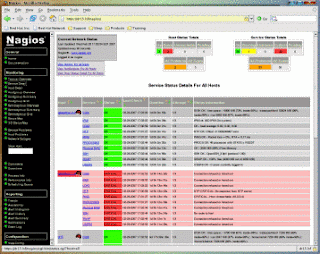Here is what you need to do to restore your GNOME desktop:
- Check if you can just get away with switching back to GNOME:
If that tells you that gnome is not installed then proceed to step 2, otherwise you should have gotten your GNOME back.yum install switchdesk switchdesk gnome
- We are going to reinstall GNOME. Run this command:
yum groupinstall "GNOME Desktop Environment"
Now run the command to switch desktops:
and you should be good getting your GNOME back upon next restart of your xwindow session (Ctrl+Alt+Bcksp).switchdesk gnome
Original Source from Anton
http://blog.bordercrossingmedia.com/2009/01/your-gnome-desktop-suddenly-reverted-to-twm-in-centos-5/
